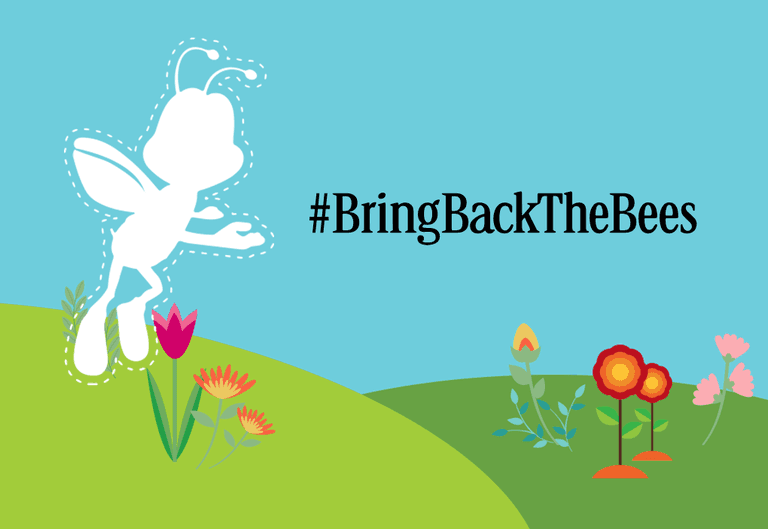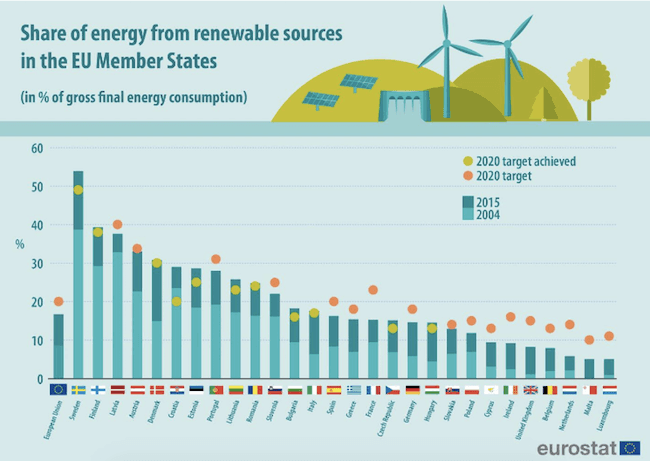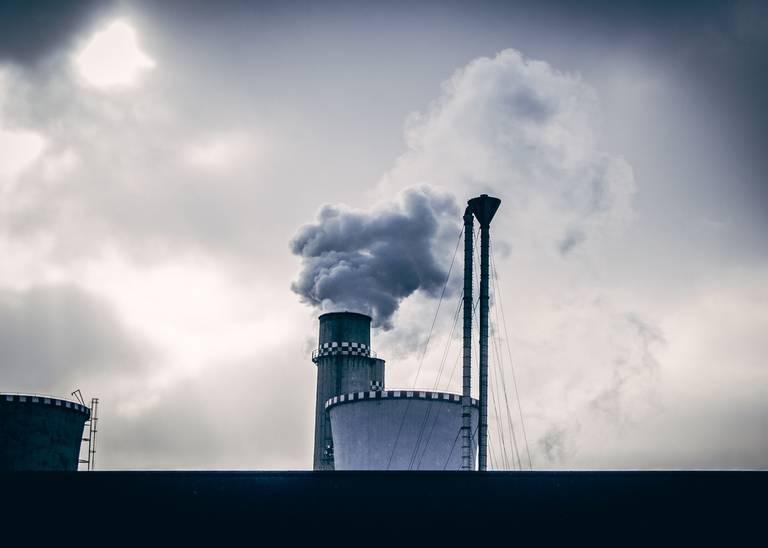On World Water Day, A Snapshot of Global Access


Almost 1 billion people live without adequate clean water close to home, according to the United Nations, which created World Water Day in recognition of that challenge.
For the world’s poorest, obtaining a glass of clean water to drink or cook with can take monumental effort. Lack of infrastructure and far-flung water sources create vast inequities for remote and impoverished communities.
The regional numbers are staggering: Some 319 million individuals in sub-Saharan Africa, an area often challenged by drought and extreme poverty, do not have access to safe drinking water, according to the World Water Council, the international body behind the World Water Forum.
Another 50 million in Latin America also live without reliable sources of clean water, many in communities that also face formidable geographic challenges. A further 554 million in Asia also lack access, says the Council.
If the world is to reduce child mortality and improve health opportunities for everyone, all of these communities must have access to clean, accessible water, says World Water Council President Benedito Braga.
“There is an absolute necessity to increase water security in order to overcome the challenges brought on by climate change and human influence," said Braga, who pointed out that ensuring access to clean water is both a Global Sustainable Development Goal and essential to improve communities’ ability to with stand climate change.
“[One] out of five children under the age of 5 die prematurely each year from water-related diseases, and nearly 40 percent of the population already face water scarcity,” statistics that are most often worsened by poor sanitation and disease control. And those statistics are expected to grow if improved water security isn’t established, Braga said.
Worldwide, insufficient infrastructure and poor water security translates into lost revenue. Water insecurity costs the global economy as much as $500 billion annually, the Council says. Climate impacts have the capacity to raise that cost even further in drought- and flood-prone areas of the planet.
This year the agency is urging countries to step up their investment in infrastructure and potable water access and to regard it as an investment in social and economic development. Braga pointed out that it isn’t just access to drinking water that increases quality of life, but adequate community sanitation services as well.
Put in financial terms, Braga says the benefits are also encouraging. “For every dollar invested in water and sanitation, there is an estimated $4.30 (400 percent) return in the form of reduced health care costs for individuals and society worldwide.”
This year the World Water Day site features a list of stories that highlight changes made around the world: steps taken to increase water reuse, reductions in pollution that has increased clean water access, and games and tips on how to increase water security.
The message is also taken to heart in India, where some of the world's largest population of people struggling with water insecurity live. The Times of India publishes a list of stories about World Water Day each year. This year's list is a reminder that building water security is a global effort.
The U.N. is also encouraging nations to take steps now in advance of its 2018 World Water Forum, which is scheduled for March 18 to 23 of that year and takes place in Brasilia. The theme of “Sharing Water” will be an apt topic as nations continue to explore how to ensure comprehensive water security within their borders.
Images: Wikimedia/U.S. Air Force photo/Master Sgt. Eric Kreps
General Mills Steps in Hornet’s Nest with Seed Giveaway


Earlier this month, General Mills launched a campaign with its Cheerios brand to give away wildflower seeds to anyone who requested them. The goal, according to the breakfast foods giant, was to disperse 1.5 billion seeds with the hope that 200 million flowers would bloom in consumers’ backyards. Company representatives even gave away seed packets on the streets of Chicago last week, and again yesterday, to promote this campaign.
The goal is to help boost bee populations, which have rapidly declined in recent years.
It all sounded like a pretty benign effort. The most likely outcome is that many consumers who received the packets would leave them in a drawer and forget about them, or toss them in their yard on the chance they might grow.
Then, a fuss started on the web. Some bloggers claimed Cheerios fans risked the spread of invasive species, a charge that echoed across social media. The sentiment even found itself repeated by Fortune.
General Mills has been constantly responding and repeating itself in kind, including in this emailed statement to TriplePundit:
“The flower varieties within the Bee Friendlier Mix were selected for their flowers which produce nectar and pollen that are attractive to bees and other pollinators. The mixture contains annuals, biennials, and perennials that produce flowers throughout the entire growing season (early, mid, and late) in a wide range of colors. The seed varieties in the mix are not considered invasive.”
But the outcry continued and morphed. On the brand’s Facebook page, for example, consumers lobbed a bevy of accusations, from the company’s use of glyphosate (Monsanto’s Roundup) in order to cultivate the oats that end up in Cheerios.
Other critics went further, pointing to a study that found Cheerios to be the food product with the highest levels of glyphosate in laboratory tests. The links between glyphosate and the death of bees have sparked plenty of scientific debate. One study suggests that the pesticide has negligible or zero links to the decline of bee populations. Research published in another biology journal, however, speculated that glyphosate could impair associative learning and behavior in honeybee colonies.
As for its impact on human health, the science is also open to interpretation. The European Union does not consider exposure to trace amounts of glyphosate as a carcinogen. Other scientists, however, expressed concern about the pesticide’s long-term effects after the World Health Organization (WHO) in 2015 determined glyphosate is “probably carcinogenic to humans.” The WHO backtracked on that statement a year later, based on what it said was the review of 1,000 studies, but it also concluded that health risks vary by the levels of exposure to the pesticide, which only adds to the confusion.
Of course, there is also the lack of evidence that GMOs, such as so-called RoundUp-ready crops that are engineered to resist glyphosate, have contributed any harm on human health (or contributed to deaths). But the social media firestorm continues around the debate.
In this case, the worst accusation flying around the Internet could be that the seeds Cheerios and General Mills shipped out were genetically-modified. The vendor is actually a seed company based in Canada’s Prince Edward Island. It has been been in business for almost 80 years – and no, Veseys Seeds are not GMO.
[embed]https://twitter.com/VirginiaInCal/status/843847840623337472[/embed]
Even under the best circumstances, a consumer engagement initiative such as this one by Cheerios is just one tool in the kit needed to revive bee populations. Planting these seeds in one’s front or backyard at the very minimum is not going to hurt; but simply tossing them in a natural environment such as in a state or national park is where the risk of an invasive species spread lies. Avoiding plants treated with neonicotinoids, which has been linked to the decline in bee populations, is also a critical tactic in addition to the planting of more flowers a home garden.
If the road to hell is paved with good intentions, General Mills risked finding itself in the fast lane. But despite suffering some bruises along the way, the pace at which the company found itself giving away seeds (its website was apparently overwhelmed, as some consumers complained that it was not working) shows that at the very least, General Mills and Cheerios helped raise awareness about this problem – resulting in success for the company overall.
Image credit: Cheerios/Facebook
Happiness: Redefining the Formula for Genuine Prosperity


By Felipe Viveros
The success of a government must be defined by 'its ability to facilitate the happiness and wellbeing of its citizens, and this should replace old paradigms that focus overwhelmingly on economic performance.' This was the consensus that emerged amongst leaders, from both the public and private sectors, who attended the World Government Summit held in Dubai one month ago.
This rings true in the tiny Himalayan nation of Bhutan, where the government's development strategy is guided by the wise philosophy of Gross National Happiness (GNH). It is an idea that struck Bhutan's young Fourth King, His Majesty Jigme Singye Wangchuck, who said that GDP was neither an equitable nor a meaningful measurement for human happiness, nor the primary focus for governance. It is equally interesting to note that Bhutan's ancient legal code of 1729 states that “if the government cannot create happiness for the people, there is no purpose for the government to exist”. Since the 1970s to date, Bhutan's development has been based on, and designed and assessed according to, the values of GNH.
Today, an increasingly wide range of experts argue that measuring government performance purely in terms of economic growth or gross domestic product (GDP) is no longer so relevant, and instead should be replaced with, "a saner measure of human progress," such as the Genuine Progress Indicator (GPI) or Gross National Happiness (GNH).
This shift beyond GDP should come not only from governments helping to create the conditions for happiness amongst its citizens, but also from people themselves, who have the potential to lead more meaningful lives in order to generate more happiness for themselves and others. If governments and citizens shared this wider focus, it could produce more prosperous societies, not only in terms of material progress, but also in terms of spiritual development, and improvements in the wellbeing of people and planet.
In the words of professor Isabel Cassier:
“While the GDP remains prisoner to a mono-dimensional, productivist and consumerist logic, the quest for a [solution] 'Beyond GDP' can be understood as an attempt to evaluate, in a global and quantified way, the results in heterogeneous fields (state of the environment, allocation of resources, objectifiable quality of life, subjective perception of well-being), viewed precisely as components of a broader vision of development.(…)”
The narrative is changing, and hopefully it will be redefined in order to shift global attention towards the importance of happiness and wellbeing for all. We are attentive to what we measure, so if we focus our attention purely on economic growth, that is where our energy will go. If we instead focus on finding a balance between material and spiritual growth, we are heading in the right direction.
In 2016, the president of the GNH Centre Bhutan, Princess Kezang Choden Wangchuck, delivered a statement titled, 'Can Happiness be a Business Purpose?' at the Sustainable Brands event in Thailand. Her Highness shared a clear message with the audience: "Our obsession with limitless growth and endless consumption has come at the cost of non-material human needs and the destabilization of the natural world. Our way of life needs to change. Business cannot go on as usual."
Paraphrasing the U.K.-based Center for Understanding Sustainable Prosperity (CUSP): It should now be our priority to focus on exploring questions such as what it means to live a ‘good life’ within the ecological constraints of a finite planet.
During the GNH Centre Bhutan's upcoming presentation at NESI, based on 'Wellbeing and happiness as a policy tool', we will share Bhutan's experience, including what has worked for us in Bhutan, how we can live a 'good life', and how we can effectively measure societal progress.
Really looking forward to seeing you there!
Image courtesy of the author
Felipe Viveros is a strategist and consultant specializing in campaigning, program design and fundraising, and the European representative of the Gross National Happiness Centre Bhutan (GNH Centre Bhutan), an NGO that has pioneered the prototyping and implementation of a new development paradigm.
He has written this article as part of his contribution to the New Economy and Social Innovation (NESI) Forum, which will take place on 19th-22th March in Málaga, Spain, and where he will participate in the working session called: Wellbeing and Happiness as policy tools and drivers of the economy.
What CSR Pros Need to Know About Integrated External Engagement


By Chris O'Reilly
For corporate social responsibility (CSR) to be successful, companies need to incorporate interaction with every stakeholder into decision-making, no matter the level of the organization. Traditional corporate philanthropy efforts are not delivering what companies -- and society -- need. As consumers continue to demand CSR efforts be present, companies must take a step back and find the most effective approach to CSR. With 57 percent of consumers stating they would purchase a product of lesser quality from a company that is more socially responsible, this aspect of a business is becoming crucial.
A solution answering the problems of traditional corporate philanthropy methods is integrated external engagement (IEE). Here you will find what it means, how it relates to CSR and why you should care:
What is IEE and its relation to CSR?
External engagements are the efforts that a company makes to manage how it interacts with the external world. Some of these efforts can be in forms of community programs or political lobbying, and include aspects of recruiting policy, project execution and product design. Typically, companies use CSR teams and annual progress reviews in place of external engagements, but this traditional approach doesn’t seem to be cutting it.The traditional approach has some positives, such as the consideration of the external environment and how it affects relationships. However, in many cases, CSR has failed in the actual creation of relationships in the external world and with stakeholders.
“The problem companies are facing is that the consumers do not know what companies are doing. Between 56 and 61 percent of consumers across the 15 largest markets in the world are neutral or unsure if the companies can be trusted to deliver on these CSR dimensions. The reason is twofold. First, companies have not communicated about what they do in a relevant and clear way. In addition, they are doing many programs which are not relevant to their stakeholders," said Kasper Nielsen, executive partner at the Reputation Institute.
Why should you care about IEE?
Utilizing integrated external engagement in CSR initiatives allows for great competitive advantage. A shared core idea among many experts is that companies must integrate external engagement into their strategy and operations. This is seen throughout Porter and Kramer’s idea of creating shared value and Ian Davis’s social contract.External engagement must be incorporated at every level of the organization and must be a part of the everyday business. The importance of the external world relies on the success of a business’ CSR efforts. So what can you do to integrate these external engagements into your business?
Integrating external considerations
There are a handful of elements that businesses can incorporate into their CSR efforts to create successful external engagements. Some of these actions include defining your contributions, understanding your stakeholders and wholly engaging with them.Defining your business through what you contribute allows you to build profitable relationships with the external world. This doesn’t mean you need to change the company’s purpose, however, it means to be completely open about that purpose and how your CSR efforts benefit society.
To do: Lay the foundation for external credibility. Use your CSR processes to set internal goals, such as “Our goal is to double sales profits while reducing its environmental impact.” It makes business sense, and it makes philanthropy sense.
Knowing and understanding your stakeholders means more than keeping track of the risks they could pose; it’s about having an in-depth profile of stakeholders while staying engaged with them. Being able to understand your stakeholders allows you to identify problems and opportunities before they arise.
To do: Take the time to research and have personal conversations with stakeholders. From here you can develop an overview of the problems and opportunities and act upon them.
Lastly, external engagement must be radically integrated. Communication is key in this step and requires companies be careful when engaging externally. This step should not be implemented too late. Many companies wait to engage externally when something drastic hits them, which can be fatal to the business.
To do: Start engaging as soon as possible. Establishing trust early on will only help later on when something does happen. Build goodwill, keep the conversation going and understand all who are involved externally.
Integrated external engagement gives your company competitive advantage and improves the effectiveness of CSR programs. The combination of using a CSR software and integrating external engagement strategies will lead companies to corporate philanthropy success.
Image credit: Pexels
Chris O’Reilly is a software executive with 20+ years’ experience in the industry, including positions at FICO and VMware. Chris specializes in finding solutions that best meets his clients’ strategic and executional needs, and managing growing teams of sales professionals.
Chris is currently Vice President Client Solutions at CyberGrants, the leading provider of philanthropic and corporate social responsibility software, delivering employee engagement programs and grants management all on one SaaS based platform. This position allows Chris to combine his professional expertise in software sales, with his personal passion for giving back to the community. Chris has been an active member of the Knights of Columbus and dedicated youth sports coach in Denver for many years. Chris earned his BBA from the University of Georgia.
Millennials, Technology Drive American Food Trends


Millennials and an explosion of healthier new products enabled through next-generation technology are driving America past sodas and fast foods. Tellingly, Americans achieved a beverage milestone while I attended the 2017 Natural Products Expo West: They now buy more bottled water than soda.
The new recipe for food and beverage sales success is to be healthy, cool, diverse and meaningful. This new success recipe now accounts for a third of our food and beverage purchases totaling almost $200 billion annually.
2017 Natural Products Expo explodes with people, passion and new products
I have been attending the Natural Products Expo for five years. My first show attracted 20,000 people. The business buzz at that time centered around the growth of natural food and beverage products, which then outpaced fast food threefold. But in reality natural foods sales were a still niche market within the food industry.
What a difference at the 2017 Natural Products Expo West.
This year’s Expo West drew nearly 80,000 attendees. The explosion in attendance mirrors the sales success being achieved by natural foods and beverages. In 2016, natural foods and beverages won 7 percent sale revenue growth. This compares to the entire food industry eking out just a half of 1 percent in sales growth.
Millennials are driving natural food sales
Silverwood Partners previewed its research on the top 10 food and beverage trends at Expo West. By my estimate, the millennial generation with their search for foods that are “cool with a purpose” are the key driver for eight of Silverwood Partners’ top 10 trends.For example, Silverwood’s No. 1 trend is the emergence of personalized nutrition. That screams millennials. As America’s most diverse generation, millennials seek personalized foods that align with their diversity and personal health focus. It is the millennial generation that is driving Silverwood Partners’ observation that “one-size-fits-all is falling fast as consumers turn to personalized nutrition data.” This goes a long way in explaining why 80 percent of millennials have never eaten a McDonald's Big Mac.
Silverwood Partners also noted the rise in alternative ingredients -- noting that the “younger generation" is "prompting further snack innovations.” Or, as a millennial would probably say it, "We want snacks that are cool, taste great and align with our lifestyles."
Millennials also contribute to the following food trends:
- Meal kit delivery
- Plant-based waters moving beyond coconut
- Sustainability driving agriculture
- Further decline of traditional grocery stores
- Demand for more informative food labels, especially for sugar
The millennial generation is pushing the food industry into an Amazon-like business model. The four key components of this emerging food industry model are:
- Digital search, engagement and ordering
- Expanded, and continuously refreshed, food diversity
- Food delivery choices and convenience, most especially door delivery
- Sustainably produced food.
Future tech is driving food solutions
Attendance was not the only evidence of how the Natural Food and Products Expo West has grown. The product booths at my first Expo West were easily housed on just one floor of the Anaheim Convention Center. This year, they took up all three floors plus the ballrooms in the adjunct Marriott and Hilton hotels. Most attendees were amazed over how the Expo West was outgrowing its ability to display products within one of our nation’s largest convention centers.
Next-generation technology is a major force behind this explosion in product innovation. Food future tech is focused on solving for the human and planet health. An animal-, sugar-, caffeine-, fat- and chemical-based diet has pushed Americans into a weight crisis that is endangering our lives and ability to afford health care. In addition, this food system accounts for over 20 percent of global greenhouse gas emissions.
Three future tech trends were identified at Expo West to solve food’s negative impacts on health and climate:
- Creating plant-rich diets
- Reducing supply chain climate change impacts
- Designing climate friendly food and beverage products.
The iconic American hamburger is an example of how future tech is driving innovation. Impossible Foods, based out of Silicon Valley, California, sells a plant-based hamburger that smells, tastes and sizzles like meat. Beyond Meat, a competing plant-based hamburger, is selling out at Whole Foods.
Future tech’s food focus is not to convert people into being vegetarians any more than the iPhone was designed to be a 'better' phone. Steve Jobs' goal was to disruptively change the definition of a phone to create unimaginable value. Future tech’s food focus is to be similarly disruptive, delivering a plant-rich diet that amazes us with its taste, smells and price competitiveness. And in doing so, this industry aims to deliver the solutions we so desperately need to combat obesity, diabetes and climate change.
With these mega trends in consumer demand and food future tech, it is only a matter of time before natural products and beverages achieves its next milestone of representing half of all American food and beverage purchases.
Image courtesy of Natural Food and Products Expo West
Where Sustainability Meets Public Health


By Daphne Stanford
It may sometimes feel as if private citizens are relatively powerless in the face of wide-scale pollution and drastic global climate change. However, we should remember that, in addition to the triple bottom line that companies can and should adhere to, individuals can also follow a simple set of principles and sustainability guidelines to benefit the planet.
In addition to the planet, we should be comforted by the fact that sustainability also benefits the least powerful among us: the poor, young and disenfranchised. Simple actions such as supporting community gardens and public transportation or alternative commuting options like walking or bicycling can help address not only air quality but also food deserts, cardiovascular health statistics, and nutritional education.
It’s as simple as remembering there’s a human side to sustainability: That is, in addition to rising water levels, flooding, unseasonably high temperatures and storms and their impact on ecosystems, people are also being affected. This demonstrates how sustainability is not only an environmental issue but a social justice issue, as well.
Public health and sustainability
If this focus on sustainability and prevention strikes you as different from past understandings of public health concerns, this is because many public health concerns historically focused on infectious epidemics — many of which have come under control as the result of immunization standards. It is only more recently that climate change has created new public health concerns. Among the many climate-related threats are heat waves, extreme weather events, reduced air quality and climate-sensitive diseases.
A recent article in the journal Nature points out the importance of recognizing the various overlapping, related priorities. The authors positioned a report on the United Nations’ 2030 Agenda on Sustainable Development as representing “a new coherent way of thinking about how issues as diverse as poverty, education and climate change fit together.” They point out that countries can’t ignore overlaps by attempting to address targets individually.
Linda Fried, a Columbia University professor of public health, also recently addressed the climate change connection, using the Zika virus as one example of a climate-related illness. She argues that more awareness must be created, along with a way to integrate climate science into health decision-making.
Personal sustainability measures
On a personal level, we can take steps to make sure our living space is as energy-efficient as possible. Little things such as conducting a home energy audit, checking windows and doors for heat loss, insulating and weatherstripping our homes, and only using energy-efficient light sources can all help reduce unnecessary fossil fuel use. The Environmental Protection Agency also offers a more comprehensive guide, if you’re interested in more ways to live sustainably and help minimize greenhouse gas emissions.We can also encourage our friends, family, and community members to walk or bike to work, school, errands, or social functions as often as possible — not only for the sake for the environment, but also for the sake of our health and well-being. It’s important for young people to develop healthy habits early, so the more we can make daily exercise into a way to socialize, the better. If exercise becomes an everyday habit—as opposed to part of a temporary fitness plan to lose weight, for example—it stands a better chance of altering people’s lifestyles for the better.
According to the University of Nevada at Reno, in addition to poor eating habits, today’s children also have poor exercise habits: “Only 50 percent of boys between the ages of six and 11 got the advised 60 minutes of daily physical activity, while just over one third of girls in this age group did. This rate continued to decline with age.” By encouraging healthy behavior in young ones and incorporating exercise into fun, family activities—such as bicycling downtown to lunch or the movies, on the weekend—you’ll be helping to improve not only bodily health, but also air quality and environmental health.
Climate change is most certainly a public health issue, but it is up to all of us to connect the dots and help facilitate change on a tangible societal scale, rather than merely a political policy scale. Share one piece of information or action you could share with your own community in the comments section, below!
Image credi: Flickr/PermaCultured
Daphne Stanford writes poetry & nonfiction, and she believes in the power of art, education, and community radio to change the world. Since 2012, she’s been the host of “The Poetry Show!” Sundays at 5 p.m. on Radio Boise. Follow her on Twitter @TPS_on_KRBX.
Is the corporate responsibility and sustainability profession just another elite?


By Tom Idle — The recent EU referendum demonstrates the national divides we have in the UK – and plenty of evidence shows that we have one of the lowest social mobility rates in the developed world. We face enormous social and environmental challenges – something that history tells us can be overcome by diversity. What better first topic then for the Institute of Corporate Responsibility and Sustainability’s (ICRS) first annual debate than the issue of social mobility in the CRS profession?
Despite the work CRS professionals do on a daily basis to promote a more equal and fair world, the recent CRS Salary Survey revealed that 93% of those working in the sector have first degrees or post-graduate qualifications. The question is: Are we just another example of a profession dominated by the elite? And more importantly, are we doing enough to create a level playing field where young people from all backgrounds can aspire to a career in the sustainability profession?
Job satisfaction
As you might suspect, job satisfaction is very high in this sector. Some four out of five people say that they really love their jobs and nine out of 10 would recommend working in CRS. “With that level of job satisfaction and with the importance of the work that you do, it’s a competitive market,” says Mariano Mamertino, an economist at the global jobs website Indeed.
“What that means is that the people that make it very often have pretty impressive educational qualifications. If you’re recruiting people from the elite of higher education, then you are already recruiting from a pool which doesn’t represent the British population as a whole.”
Jobseekers and workers are increasingly interested in things that go beyond just mere compensation and benefits, with many attracted to purpose driven companies, says Mamertino.
According to the Indeed Job Happiness Index 2016 the most important factor was actually work life balance – not salary. In fact, compensation actually ranks as the least significant. That’s not to say it doesn’t matter, of course. But, “good culture, a clear mission – companies that are good places to work – translates into real satisfaction for their employees,” he adds.
Academic qualifications
Privately educated people still continue to dominate the top jobs in the CRS sector. Such individuals are more likely to receive private tutoring and go on to do postgraduate degrees. “So those postgraduate degrees have become more of a distinguishing mark as universities were a generation before,” says Dr. Lee Elliot Major, chief executive of the Sutton Trust.
The cycle then continues as those privileged individuals get senior positions and higher wages, which are reinvested into their children’s future. “The access to the workplace has become the new frontier of social mobility.”
The question is when we’re looking at a CV and academic success, what exactly are we looking for? “We need to think about talent,” says Major. “What is it about talent, is that more than just having an academic qualification? How do you identify that?”
Beth Knight, head of corporate sustainability, diversity and inclusive Leadership for EY, recognises that certain skills are required to fill CRS roles in order to understand complicated concepts and distill them within the workplace. “I do think it’s critical that you have credible, talented, highly skilled people in these jobs because they’re difficult. How those people are credible and highly skilled, and how they get to that is interesting,” she says.
Knight sees herself as a good example of social mobility, growing up in a working class background, and getting into university through an access course with a scholarship. She also has a Master’s degree, but it’s one she obtained while working. “I feel that that gives me the credibility to do a good job because I have the confidence that those qualifications bring me.”
Clearly, Knight is proud of her achievements and believes that academic qualifications are valuable in the CRS space. However, at EY, one of the words they use is “degree caliber,” with EY actually removing the degree qualification requirement to get in its graduate programmes so they can assess aptitude from a broader talent base.
Glass ceilings
“We do have a very good demographic at the base of the pyramid. I think where it becomes really interesting is as you move up the organisation, what you see, and the different glass ceilings that you start to hit,” notes Knight.
According to the data, these experienced shoes are not easy to fill, with many employers reporting that they are struggling with their CRS vacancies, especially those that require management or leadership skills.
That’s when compensation becomes more of an issue. “The gap between top paid people and the bottom paid people in business has got much greater, to the extent that a huge part of the rising poverty in recent years has been from in-work poverty,” says Tom Levitt, founder of Sector4Focus. “And if we’re talking about responsible business, lets think about how responsible business tries to tackle in work poverty.”
It shouldn’t be ignored that those coming from alternative routes actually bring valuable skills that could disrupt the cycle. In some research Knight did with Cambridge University, she found that those with postgraduate qualifications were highly skilled with entrepreneurial skillsets, while people who had practitioner level qualifications “had much more high skill areas in inclusive behaviours and their ethical orientation”.
Social diversity
Since education is such an integral part of the problem, the ICRS debate panel recognised that while there’s some great work in embracing ethnicity and gender, “one of the things we’ve forgotten about is social diversity,” says Major – particularly around working class white males.
Youth unemployment is a huge challenge in Europe, notes Mamertino, with some of the reasons being the divide between the education and business realms. Those countries that are getting it right, like Switzerland, Germany and Austria, enjoy some of the lowest youth unemployment levels in the world. “They have a really strong connection between the business community and the education system at a local level,” he says. A strong apprenticeship system brings real choice for young people. “They face a choice of either going to university or equally a rewarding a career in the vocational career opportunities.”
Major agrees that the improvement of apprenticeships can create a viable avenue alongside degrees. “We’ve found that the returns to high quality apprenticeships that have proper progression have higher earnings returns now than many degrees.”
Looking to the future
CRS shouldn’t belong to the elite, says Levitt; it should belong to everyone. “Every manager should be a CRS manager. They don’t have to have CRS after their name, but its up to the CRS professionals to lead that, to say this knowledge and expertise is not just belonging to the elite,” he says. “We need to go out there and share it.”
He notes that of the world’s top 100 economic entities, 69 are actually corporates. “That’s the highest that figure has ever been, and it shows what responsibility business and corporates have for the future of the planet.”
For change to occur, Major says we need to make commitments, suggesting that 50% of vacancies should be open to talented people who have gone through non-academic routes.
It’s clear that while some measures are being taken, such as EY’s idea of “degree caliber” more can be done to address the elitism of the sector. By recognising a broader definition of talent, with the improvement of apprenticeships and addressing the risk of in-work poverty, perhaps the profession can work towards exemplifying the diversity and equality it promotes. Could the next CRS salary survey deliver us a different picture?
European Union Toots Clean-Energy Horn with 2020 Goals in Sight


The clean-energy news from across the pond is looking good: Last week, the European Commission reported that renewables carved out an impressive 16.7 percent share of energy consumption among European Union members in 2015, practically twice the amount from 2004.
With Sweden, Finland and Latvia leading the way, the EU is collectively on track to meet its 2020 clean-energy target, and several member nations have already blown past that mark.
Over in the U.S., it's a different story . . . or is it?
EU has clean-energy goal in sight
The latest clean-energy news is derived from a report on 2015 energy patterns compiled by the EU agency Eurostat.
Among other things, Eurostat tracks gross final consumption of energy as a "headline" indicator for the Europe 2020 strategy, which calls for the EU to collectively source 20 percent of its energy from renewables by 2020. Within that target, each member has its own 2020 goal.
Aside from reaching a collective mark of almost 17 percent renewable energy, Eurostat reported that 11 member states have already reached their 2020 targets: Bulgaria, the Czech Republic, Denmark, Estonia, Croatia, Italy, Lithuania, Hungary, Romania, Finland and Sweden.
Austria and Slovakia are likely to meet the goal in time: Both are within 1 percent of their targets, Eurostat reported.
The EU's 2020 goal targets a 20 percent share for renewables in terms of gross final consumption -- which accounts for all energy use, including power generation and losses incurred during distribution. An additional agreement calls for 27 percent renewables by 2030.
By that measure, several countries have already run past the goalposts:
"Sweden led the way with more than half (53.9 percent) of its gross final consumption of energy coming from renewables in 2015, followed by Finland at 39.3 percent, Latvia at 37.6 percent and Austria at 33 percent," Eurostat reported.
While the EU still has a little way to go before it hits its target for gross final consumption, it already reached its 2020 target for final energy consumption: energy measured at the consumer end, including residential, industrial and other users.
Don't forget energy efficiency!
The skyrocketing growth of renewable energy generation of course plays a critical role in decarbonization, but the European Commission emphasizes that energy efficiency is also a vital factor.
The EU aims to improve energy efficiency goal by 20 percent by 2020 -- a goal it already met, which is reflected in the figures for final energy consumption.
The EU is not likely to stop there, considering the connection between efficiency improvements and economic activity:
"Energy efficiency is a key element of the clean energy transition," the European Commission said in a February press release."It unlocks the energy savings that boost growth in the EU's economy, investments and job creation. It brings cost savings for consumers, in addition to benefits in the form of the reduction of greenhouse gas emissions, improved air quality and increased security of supply, competitiveness, sustainability of the European economy and job creation."
Moving forward, one critical task facing the EU is upgrading its stock of buildings. In particular, heating and cooling present a major challenge. They account for half of energy consumption in the EU, and they still rely heavily on fossil fuels.
Meanwhile, much of the existing building stock -- about two-thirds -- was constructed before the advent of modern efficiency standards.
Based on the current rate of building renovation, the EU has some catching up to do: On average the EU renovation rate is around 1 percent per year. This means that renovating the entire EU building stock would take roughly 100 years.
The good news is that with the increased focus on energy efficiency, the rate of renovations is beginning to climb in several member states.
Clean Power Plan on autopilot
Meanwhile over in the U.S., clean-energy progress took a huge hit last fall when a majority of Electoral College votes went to Donald J. Trump for president.
As expected, the Trump administration is not particularly enamored with renewables (one exception is former Texas Gov. and wind energy fan Rick Perry, who now heads the Department of Energy).
Heading up the Environmental Protection Agency is noted climate change denier and former Oklahoma Attorney General Scott Pruitt. The EPA is the federal agency charged with administering the Clean Power Plan, which is on its way out, so there goes that.
It's not all about Pruitt, though. Even with a more science-respecting leader helming EPA, President Trump has made it clear that the Clean Power Plan is toast. The threat of deep cuts under the newly unveiled Trump budget isn't helping matters.
However, if and when the Clean Power Plan evaporates on paper, renewables will continue to make inroads against fossil fuels in the U.S.
Last fall, for example, the Environmental Defense Fund listed several major power companies that have already laid big plans to continue adding renewables as well as natural gas to replace coal. American Electric Power is representative:
"AEP is reducing emissions by replacing coal with renewables and natural gas," the Environmental Defense Fund reported. "AEP has already cut carbon dioxide emissions 39 percent from 2000 levels. The company plans to add 5,500 megawatts of wind, 3,000 megawatts of solar, and 3,000 megawatts of natural gas in the coming years."
That's nothing compared to MidAmerican Energy, which is aiming for 100 percent renewables:
"MidAmerican’s just approved $3.6 billion project to add 2,000 megawatts of wind — called the 'largest wind energy project in U.S. history' — will expand wind energy to become 85 percent of the company’s sales."
EDF also assembled some noteworthy examples of state progress on Clean Power Plan goals, much of which is attributed to switching from coal to natural gas.
Dozens of states and power companies sued to stop the Clean Power Plan, but many of these same stakeholders have already taken significant strides toward compliance and are not likely to change their plans.
Reuters took stock of the situation last fall and noted that "most" of the 27 states challenging the Clean Power Plan in court are "likely" to hit their targets:
"Already, Arkansas, North Carolina, Oklahoma and South Dakota appear to be meeting the CPP's early targets," wrote Nichola Groom and Valerie Volcovici of Reuters. "And changes in the power market, along with policies favoring clean generation, are propelling most of the rest toward timely compliance."
Power companies and states are not the only stakeholders that will continue to drive Clean Power Plan compliance. Cities and businesses have also emerged as important catalysts for climate action and eager adopters of renewables. That, too, is unlikely to change.
In another good sign, Republican legislators are beginning to join with Democrats in support of clean energy and climate action.
And finally, newly minted Secretary of State Rex Tillerson is fresh off a decades-long stint with ExxonMobil, where he spearheaded the company's push for natural gas as a replacement for coal.
Tillerson is in a perfect position to accelerates that effort under the Trump administration. Even without his help, coal will continue its downward slide in the U.S. despite the many times President Trump promised to bring back coal jobs.
Image (screenshot): via Eurostat
Why the Social Cost of Carbon Is Critical for America to Make Sound Policies


Editor's Note: This post first appeared on WRI and is a part of the blog series, The Trump Administration. The series analyzes policies and actions by the administration and their implications for climate change, energy, economics and more. It is republished here with permission.
By Noah Kaufman, World Resources Institute
According to reports, U.S. President Donald Trump is poised to sign a new directive dropping climate change as a consideration when evaluating government agency actions. The move would also reconsider the government’s use of a metric known as the social cost of carbon, which helps analysts assess the economic benefits of climate action and economic costs of inaction.
The social cost of carbon (SCC) assigns a dollar value to the benefits from reducing carbon dioxide emissions and addressing climate change. Examples of such benefits are wide ranging, from preserving crop yields and protecting human health to limiting the risk of flooding and coastal erosion. With these estimates in hand, agencies can determine if the benefits from efforts to curb carbon pollution – such as standards calling for more efficient appliances or vehicles -- are worth the investment.
If agencies stop using the social cost of carbon, it would prevent the government from using the best available science to inform their decisions and from holding polluters accountable for damages caused by carbon dioxide emissions.
How the social cost of carbon came to be
In 1981, former President Ronald Reagan required federal agencies to quantify the benefits and costs of major regulations before deciding whether to impose them and how stringent to make them. Federal agencies began estimating SCCs following a 2007 Supreme Court ruling that led to the U.S. government regulating carbon dioxide emissions as an air pollutant.In 2009, the Barack Obama administration brought together a group of technical experts to develop a single set of U.S. government SCC estimates based on the best available science and economics.
Because estimates of the SCC are highly uncertain — it requires forecasting how changes in emissions affect the climate, how changes in the climate affect economies around the world, and the value of climate damages occurring around the world over centuries — the U.S. government recommends using a wide range of values, from $11 to $105 per ton of CO2 in 2015.
Why we need the social cost of carbon
Eliminating the use of the SCC in federal regulations would squelch agencies’ ability to follow President Reagan’s guidance and conduct comprehensive cost-benefit analyses for regulations impacting carbon emissions. After all, without quantifying the benefits, how can we hope to compare the benefits of emissions reductions with the associated costs?
Worse still, the Trump administration could continue using benefit-cost analysis to make regulatory judgments with the assumption there is no value in curbing carbon emissions, despite the mountain of scientific evidence that shows otherwise. Virtually all regulations would then artificially appear too costly to justify, leading to a situation where polluters have license to spew carbon into the atmosphere with no accountability for the damages they cause.
The courts will likely find moves eliminating the SCC to be illegal, because they have ruled (and subsequently affirmed) since 2007 that “the value of carbon emissions reduction is certainly not zero.”
In 2016, a federal appellate court struck down a challenge to the U.S. government’s SCC estimates. The Trump administration will have the challenging task of finding support for such a drastic change to the current U.S. government estimates, while evidence points in the opposite direction. In a recent poll of 1,100 experts on the economics of climate change, 69 percent said the U.S. government’s current “central SCC” estimate of $36 per ton is too low for the benefits of emissions reductions, while less than 10 percent said it was too high.
Following years of study, the National Academy of Sciences, Engineering and Medicine recently released a report outlining ways to improve SCC estimates and research priorities going forward. Rather than ditching the SCC, the Trump administration could use the findings of this report as a basis for continuing the constructive discussion over the benefits of reducing carbon dioxide emissions and avoiding the risks from climate change.
In contrast, eliminating the use of the SCC in federal rule-making would ignore the recommendations of the country’s top experts and push the Trump administration into a court battle that it has a high likelihood of losing.
Image credit: Pexels
Noah Kaufman is a Climate Economist with the World Resources Institute.
Mars, Nestlé, Mondelēz Pledge to End Deforestation in Cocoa Supply Chain


When the subject of deforestation comes up, four large drivers often come to mind: beef, palm oil, soy and timber. But the global demand for chocolate is also causing its share of deforestation, especially in Côte d’Ivoire and Ghana, which by most accounts are the world's two largest producers of cocoa beans.
Côte d’Ivoire has lost almost half of its original forest cover; estimates suggest Ghana’s tropical forest areas are now only a quarter of their original size. With 3 million tons of cocoa and chocolate products made annually, this $100 billion industry is at risk of long-term decline if cocoa farmers cannot become more careful stewards of the land, say WWF and other NGOs.
The Prince of Wales has taken a keen interest in the cocoa sector and its impact on forests across the globe.
Last week, Prince Charles hosted a meeting that included representatives of the world’s largest chocolate manufacturers, including Mars, Nestlé, Mondelēz and Hershey. Delegations from Côte d’Ivoire and Ghana, the countries that will be the focus of this initiative, also attended.
The outcome of the meeting in London is a statement of intent that aims to bring corporate, government and civil society together in order to halt deforestation and forest degradation brought on by the chocolate industry.
Other companies pledging to work on this effort include producers and suppliers Blommer, Cargill, Olam, and Touton; chocolatiers Barry Callebaut and Ferrero have also given their support.
A more detail framework will be announced later this year at the COP23 climate talks scheduled to occur in Bonn, Germany.
Many of these companies, which also produce palm oil or use the ingredient in their products, have already established deforestation policies in some form. They weren't left with much choice, as NGOs have been successful in educating consumers about the impact the global food industry’s supply chain has on both human rights and the planet.
Mars, for example, says it has taken several steps to mitigate deforestation. The company also insists it has embarked on a program to work with cocoa farmers to boost yields while teaching them more sustainable farming practices. For the most part, WWF has been supportive of Mars’ efforts, especially when it comes to palm oil, the ingredient that helps give many chocolate products their smooth and silky consistency.
Mondelēz, which spun off from Kraft Foods in 2012, also discloses its own deforestation policy. The company launched a program in late 2015 to use market-based approaches to stop deforestation in Côte d’Ivoire, and one of the initiative’s goals was to work with 26,000 small-scale cocoa farmers in the country. The company, which owns brands such as Cadbury, Milka and Toblerone, also received high marks from WWF for its anti-deforestation work elsewhere within its supply chain.
Many of these companies had fractious relationships with environmental organizations in the past over the chocolate industry’s ties to deforestation and human rights violations. Earlier this decade, for example, Greenpeace savaged Nestlé for what it said were the links between popular chocolate bar brands like Kit Kat and environmental destruction.
Nestlé has since launched a deforestation policy, and several years later Greenpeace praised the company (as well as Ferrero) for making significant progress within its supply chain. But those corporate commitments are mostly focused on palm oil. Cocoa has largely stayed under the radar, as outrage over palm oil’s impact in Indonesia and Malaysia scored more news headlines and more attention.
Now these companies have put cocoa front and center.
The first challenge this group will face, once it establishes a framework, is communicating the broad goals -- which include sustainable farming practices, women’s empowerment and land restoration. Unlike palm oil, which is mostly grown on large plantations managed by huge companies, cocoa farming involves millions of small farmers, many of whom toil for about $1 a day.
These companies will have to rely on the governments of Côte d’Ivoire and Ghana for these programs to scale; and neither of these countries rank particularly high on the anti-corruption front.
The challenges are huge, but the chocolate industry really had no other option if it is going to survive in the long run.
Image credit: Nestlé/Flickr